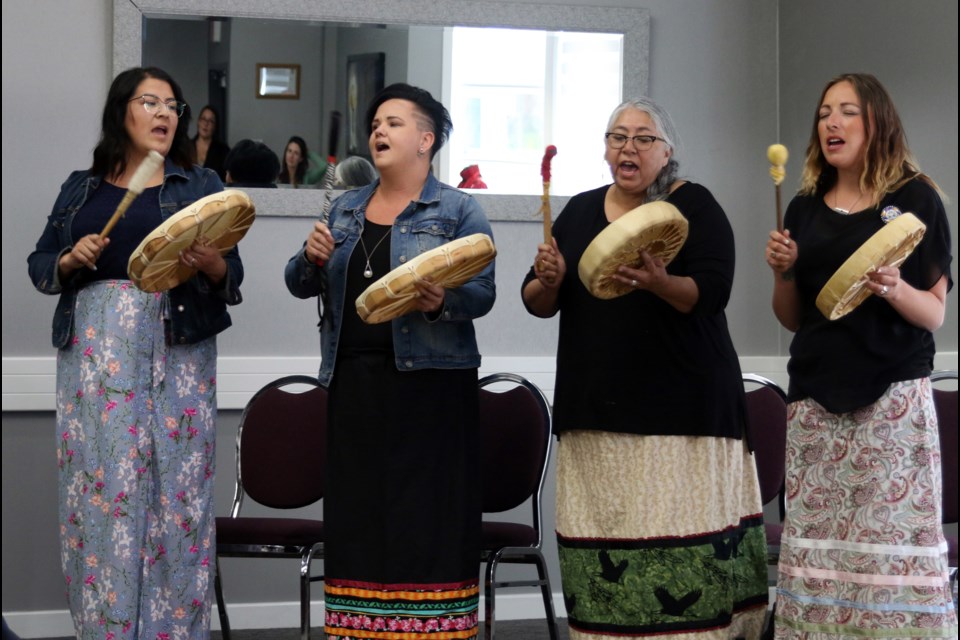THUNDER BAY - Indigenous women and girls, both survivors of human trafficking and those still being exploited, say they often have nowhere to turn to for help and feel trapped.
“I wish someone had told me what it was I was going through,” one woman said. “Wish they had taught me that it was trafficking. I had to find out by myself.”
“That look – they don’t even have to say anything – you just get that look of judgment from service providers,” another said.
“Girls get hurt and they have nowhere to go,” another woman said. “I just wanted somewhere safe to go where I was not treated like s—t.”
These stories served as the first steps in the creation of The Journey to Safe Spaces: Indigenous Anti-Human Trafficking Engagement Report for 2017-2018, the first of it’s kind in Canada.
Developed by the Ontario Native Women’s Association as part of the Indigenous Anti-Human Trafficking Liaisons project, the report was three years in the making and involved engagements with agencies, organizations, and more than 3,300 community members across six liaison units across Ontario.
“What this report does is talk about women and their experiences not only within the health system, but also within the identified hubs across Ontario,” said Collin Graham, program manager for community development with ONWA. “Thunder Bay is one of those hubs. They talk about the need for narrowing the gaps in services so we can provide safe, equitable, and safer spaces for women.”
The report also involved 250 self-identified survivors of human trafficking who shared their stories and experiences.
Jessica Wilson, special projects coordinator and Southern Treaty Three liaison for ONWA, said it was key that the report be survivor-led because women who have lived through those experiences know what is needed to be successful when it comes to healing.
“Survivors are the experts,” Wilson said. “They are dealing with this all the time. This is their life. They know what they need and they know what’s going to work for them in their healing journey and their successes. We can give them those tools and give them those resources and I think this is incredibly important to have their insight.”
According to Wilson, members of the Indigenous population are much more vulnerable to becoming victims of human trafficking due to intergenerational trauma.
“It’s all of the after effects of that intergenerational trauma and not having that family support and not having those key supports in their lives,” she said. “They fall through the cracks. They just really have no supports and in the trafficking, those traffickers become that support.”
The report details women’s experiences with safety, accessing support services, housing, issues on reserves, and prevention.
Communities also expressed concerns regarding program and system models, legal and policy issues, and prevention.
“I think it is going to bring a huge light to people who are not exactly aware of what human trafficking is and what people are dealing with on a daily basis,” Wilson said. “It’s going to be very eye opening.”
From the report, ONWA has developed 14 recommendations it proposes to implement through a six-part strategy rooted in collaboration and relationships through Safe Spaces.
The six-part strategy will focus on survivor-centred services, prevention through education, access to safe and respectful spaces, core supports, have evidence-based policy and system reform, and offer streamlined supports.
“We are a firm believer that when it comes to human trafficking not one sector can actually solve the problem of human trafficking,” Graham said. “We believe this is a community issue, we need to stand united as a community and help those who have experienced exploitation and more importantly human trafficking.”
For the survivors of human trafficking, it was the connection their culture and identify that helped them survive, Graham said, and he hopes the creation of Safe Spaces will allow more women to find the support they need to escape victimization and exploitation.
“When we talk about exploitation of women, one of the very first things that happens is the isolation from families and community,” he said. “In creating safer spaces, by inviting women back into the circle by making sure they know they have a place within our community and they are loved.”
“The thing that saved my life was connecting to my culture, knowing my clan and the responsibilities that come with it and connecting, being welcomed home by my community,” one of the women in the report said. “I would be dead if that had not happened.”
The full report is available on the Ontario Native Women's Association website.
